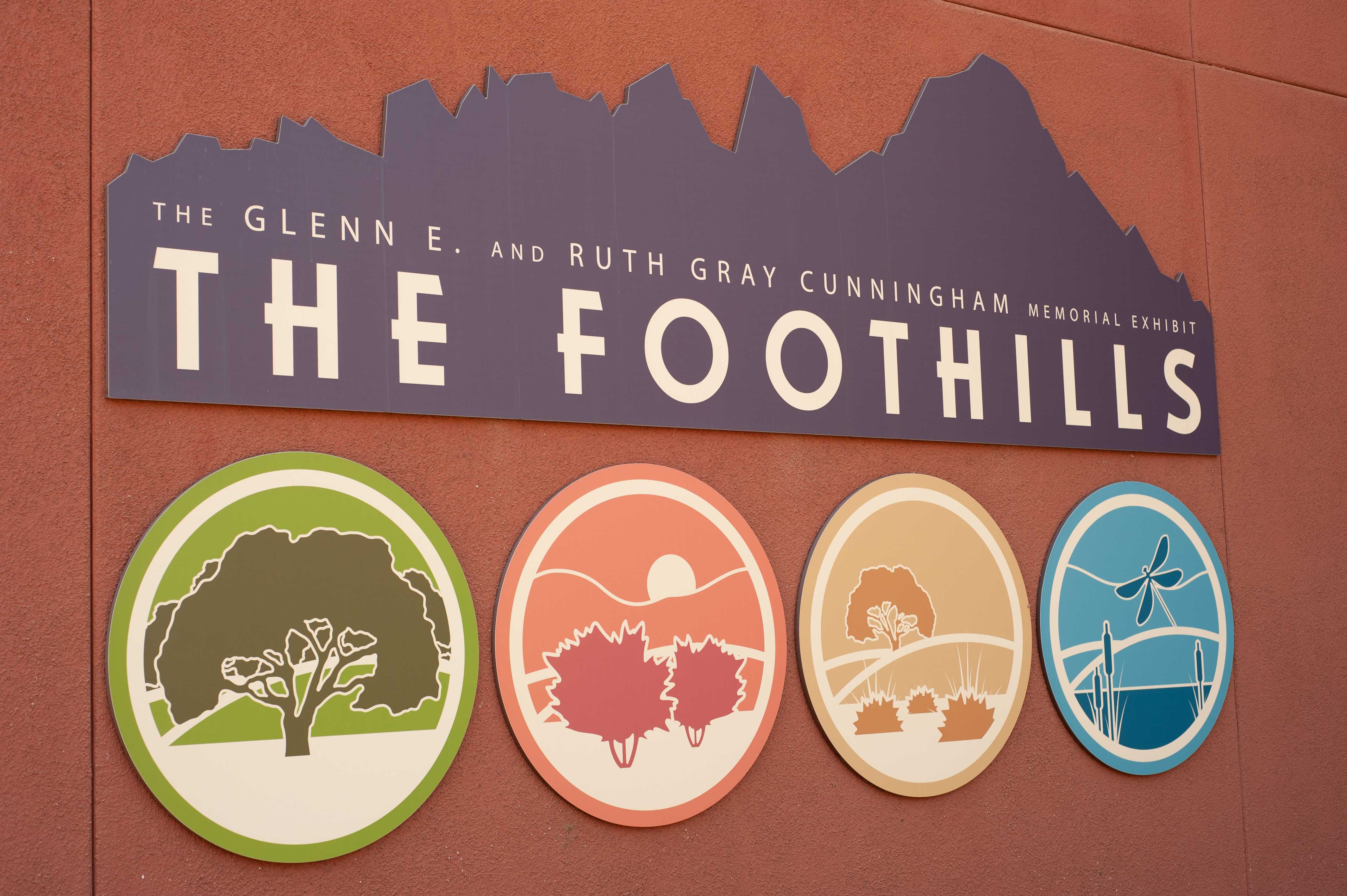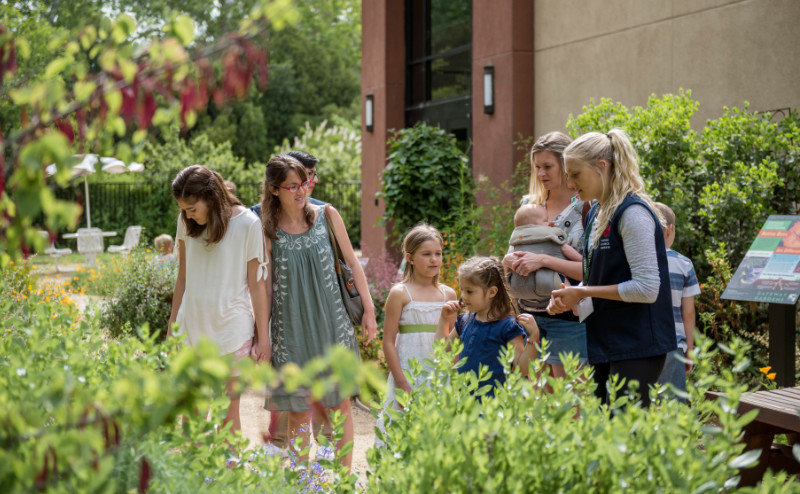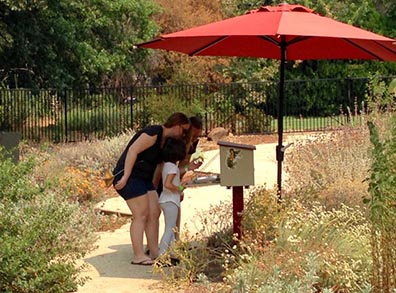Gateway Gardens
The gardens surrounding Gateway Science Museum include the Native Plant Pollinator Garden, The Glenn E. and Ruth Gray Cunningham Memorial Exhibit: The Foothills, the Paleo Plaza, and the Northern Lower Montane and Delta Ecoregions gardens.
Don't forget to visit our Garden Detectives(opens in new window) page for educational outdoor activities!
The Glenn E. and Ruth Gray Cunningham Memorial Exhibit: The Foothills

The exhibit is made possible by a generous gift from the estate of Glenn E. and Ruth Gray Cunningham.
The Foothills highlights major habitats of Northern California’s foothills environments - the savanna, chaparral, riparian, and oak woodlands - through displays and interactive opportunities for general visitors as well as students engaged in facilitated science activities. Learn about the specialized ecology of these habitats, the plants that they support, and their role in our regional environment.
Native Plant Pollinator Garden

Gateway’s "Native Plant Pollinator Garden," designed and constructed in 2013 in collaboration with CSU, Chico Associated Students Sustainability interns and the Mt. Lassen Chapter of the California Native Plant Society in Chico, is home to more than 40 plants native to Northern California. These plants were chosen to provide food in the form of pollen, nectar and larval foliage for a wide variety of pollinators – bees, flies, butterflies, moths, beetles & birds. At any one time throughout the year, the garden will have between 3 and 5 different kinds of plants in bloom.
Throughout each stage of their lives (as eggs, larva, and at maturity) pollinators need the same things as humans: food, water and shelter. Food (in the form of pollen, nectar and sometimes foliage), water (even puddles on rocks or dirt will provide mineral nutrients) and shelter in the form of trees, shrubs and open ground to get away from predators and out of the weather.
With increased loss of wild habitat and increasingly fragmented remaining habitat, native pollinator populations are under a great deal of pressure. In an effort to understand the extent to which urban habitat gardens can be effective for supporting pollinators, Gateway’s "Native Plant Pollinator Garden" is a part of UC Berkeley’s Urban California Native Bee Survey(opens in new window).
Gateway’s "Native Plant Pollinator Garden" was designed by Adrienne Edwards and Paula Shapiro. Site design and project construction overseen by John Whittlesey and funding was made possible by CSU, Chico Associated Students Sustainability.
Eco-Regions
Delta Ecoregion: The California Delta is the large fan-shaped plain of estuaries and sediment deposited from the Sacramento and San Joaquin rivers where these rivers meet the San Francisco Bay and the Pacific Ocean beyond. Plants in the Delta Region of Gateway’s gardens, located on the southern side of the museum, include wetland-adapted plants that might be found in the rich delta environment. An elegant native Sycamore tree, California hibiscus, elderberry, sedges, grasses, and shrubs thrive here.
Northern Lower Montane Ecoregion: The lower elevation forests of Northern California and the headwaters of the Sacramento River are depicted in this eco-region, located along the museum's northwestern boundary. A mixture of trees such as Douglas fir, ponderosa pine, and incense cedars populate this region along with unique ancient shrub species, evergreen foliage, and distinct understory flora.
Paleo Plaza
The "Paleo Plaza," located left of the museum entrance, is a peek into the distant past when water-loving plants were declining as oceans subsided and land plants, including the flowering and seed bearing plants, were rapidly evolving and adapting to more and more dry land, and increasingly diverse insects, birds and mammals. Plants here like ginkgo and horsetail are "living fossils" that we know from fossil records to have existed alongside earth's earliest plants. Other plants in this exhibit including cycads, palms, ferns, and magnolia are descendents of early plant groups and give us a sense of what it might have been like to walk among our planet's early flora. Ancient fossilized plants are known as paleo-flora.
Discovery Stations in the Gateway Gardens

Discovery Stations in the garden were made possible by funds from The Discovery Shoppe, Chico.

